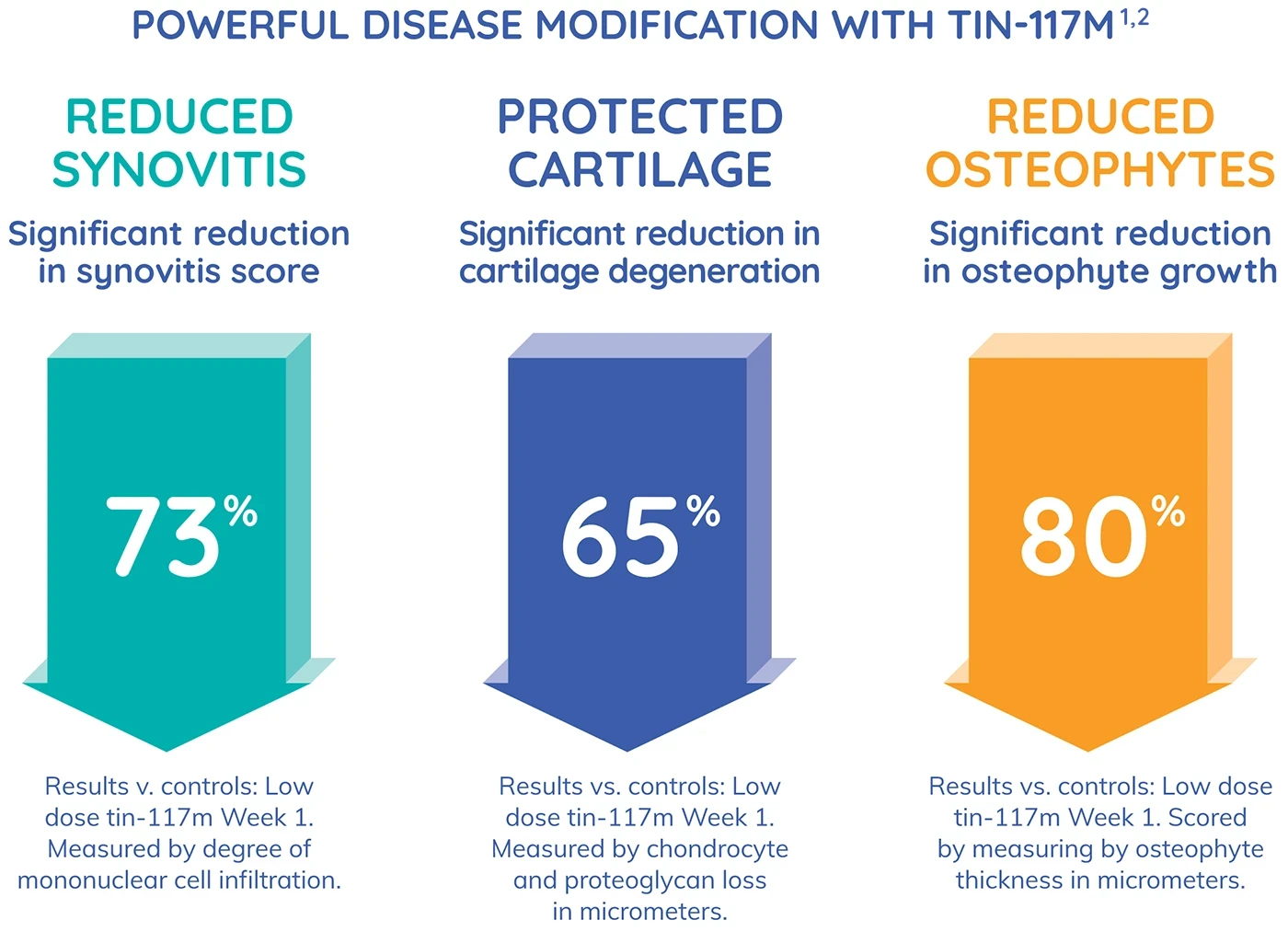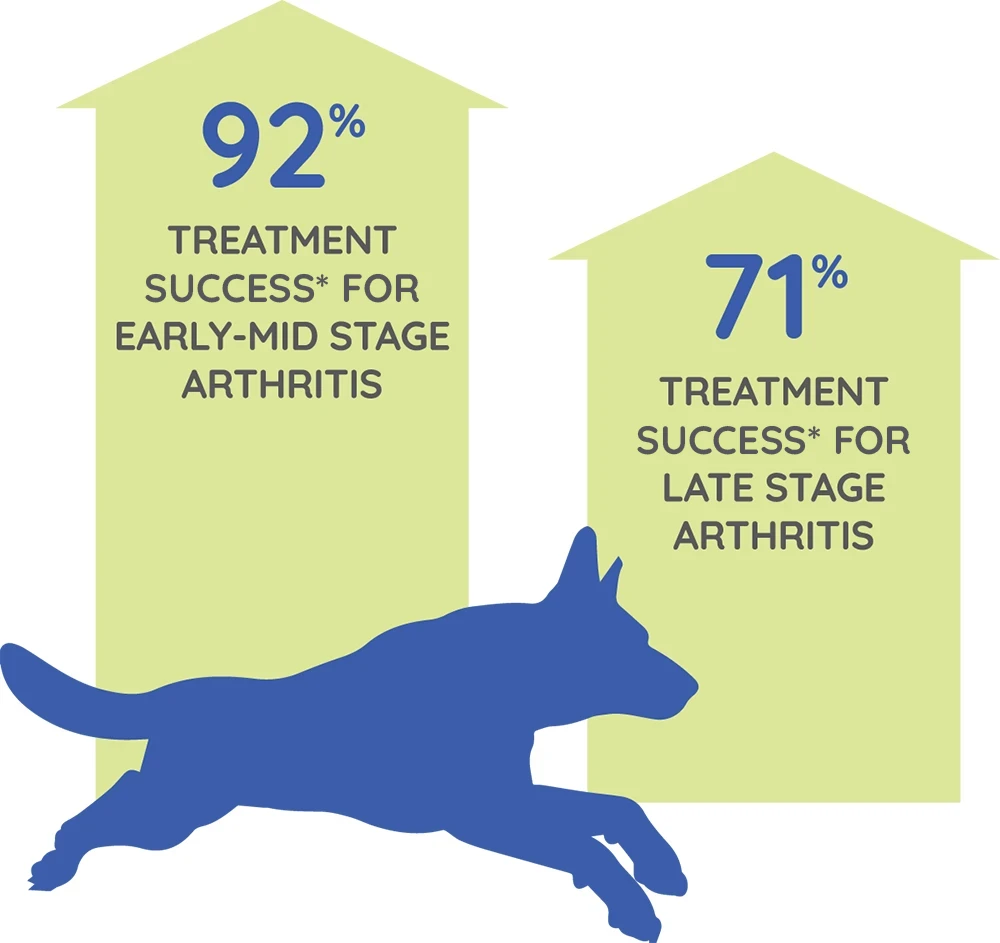Synovetin OA
“This review substantiates [tin-117m] as a transformative veterinary therapy, bridging preclinical insights with clinical outcomes that strongly support a positive disease-modifying mechanism.”8
— Bendele A, Doer CA, Gonzales GR, et al.
Evidence of osteoarthritis disease modification with a Sn-117m microparticle device: a review and validation in mammalian models. Front. Vet. Sci. 2025;12:1-13.
Preclinical and clinical evidence of tin-117m support its mechanism to directly address OA in mammals8
Preclinical evidence in Lewis rats—slowed bony remodeling and demonstrated a powerful positive disease modifying effect.8
- Resulted in significant reductions in synovitis, cartilage degeneration, and osteophyte formation8
- Histopathology strongly supports a disease modifying positive therapeutic effect8


*Overall treatment success based on a composite of force plate, Canine Brief Pain Index (CBPI), and clinician assessments for the label dose.
Published, peer-reviewed clinical evidence in dogs—demonstrated up to 1 year of continued pain relief and joint improvement with just 1 injection.3,8
- Improvements increased steadily up to 9-months post-treatment and persisted through the end of the study at 12-months1-3
- Sustained effectiveness 9 months after tin-117m’s radioactive decay. A possible effect on the course of the disease rather than a transient anti-inflammatory response8
- Provides further evidence supporting an OA disease-focused mechanism of action similar to that seen in rodent models1-3,6-8
Together, these findings position Synovetin OA as a treatment set to change the course of OA management by reducing pain at its source and enhancing the potential to prevent further joint damage1-3,6-8
By specifically targeting synovial inflammation, Synovetin OA fills the treatment gap, leveraging tin-117m to help improve outcomes through symptom relief and potential structural preservation.1-3,6-8
- Durability of effect shown in clinical studies points to a “therapeutic reset” of the joint’s inflammatory setpoint8
- Reduction of macrophage-driven cytokine production helps to mitigate the inflammatory cycle that drives OA8

